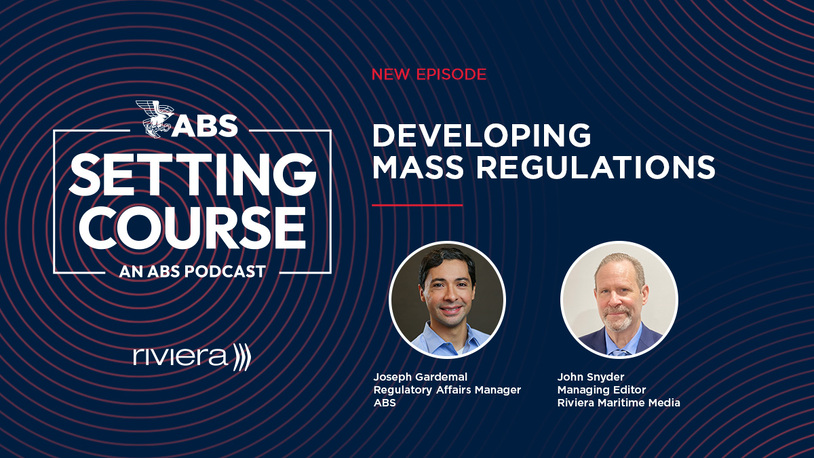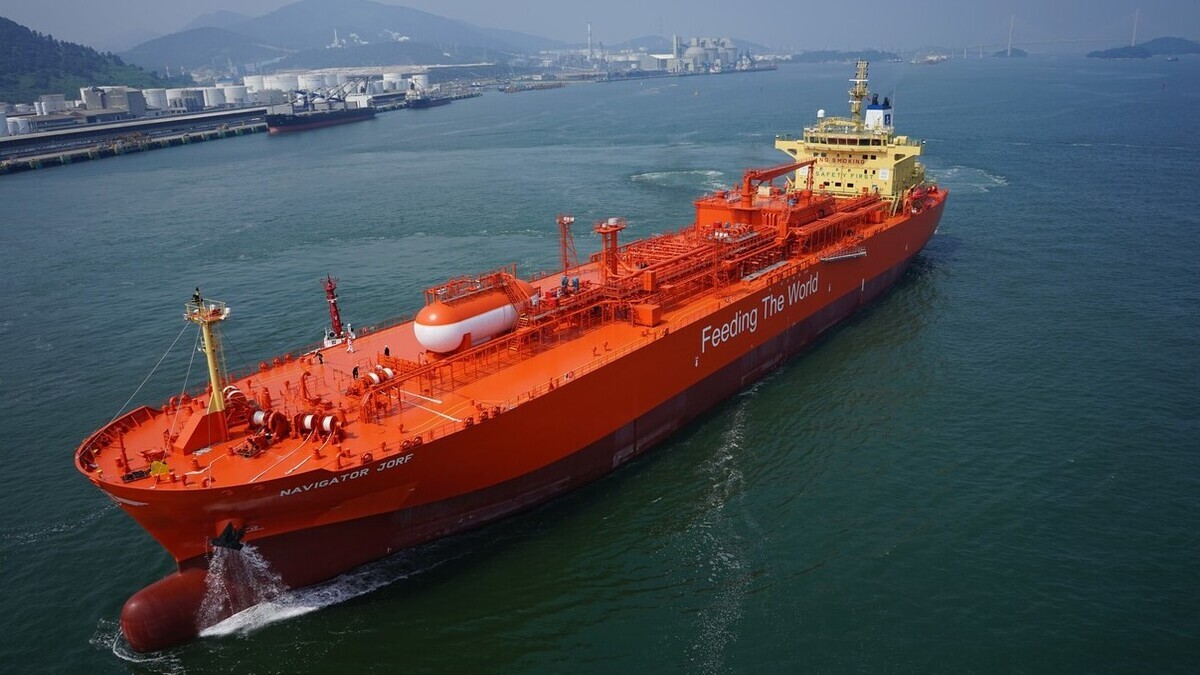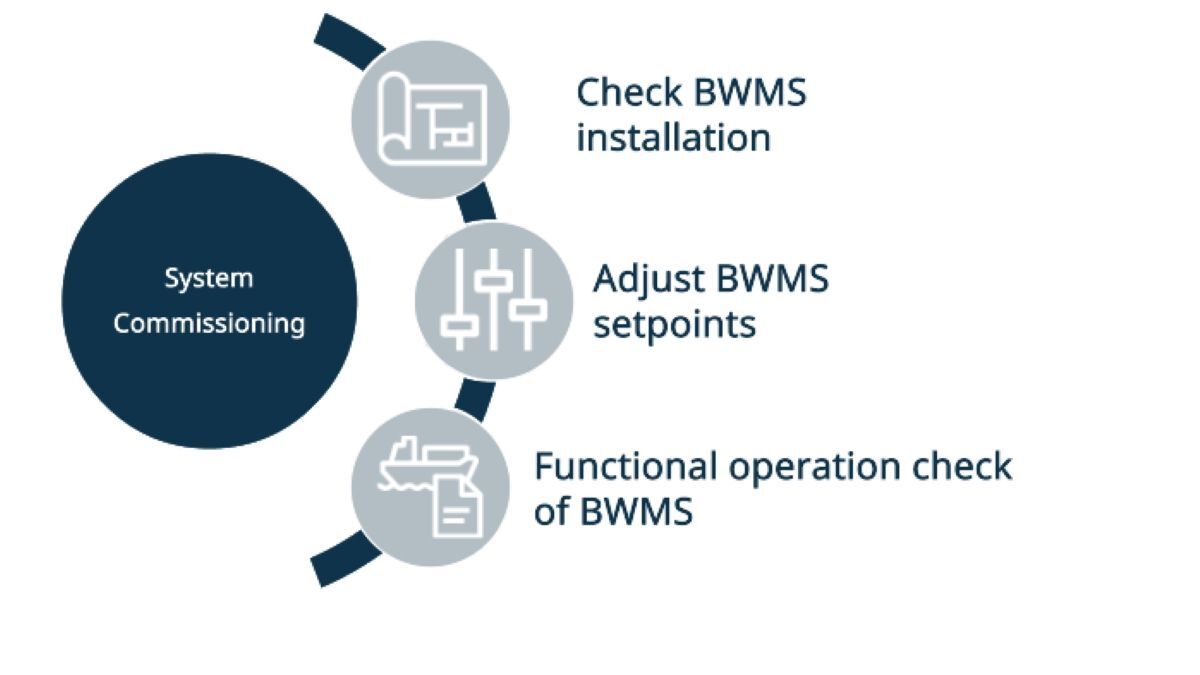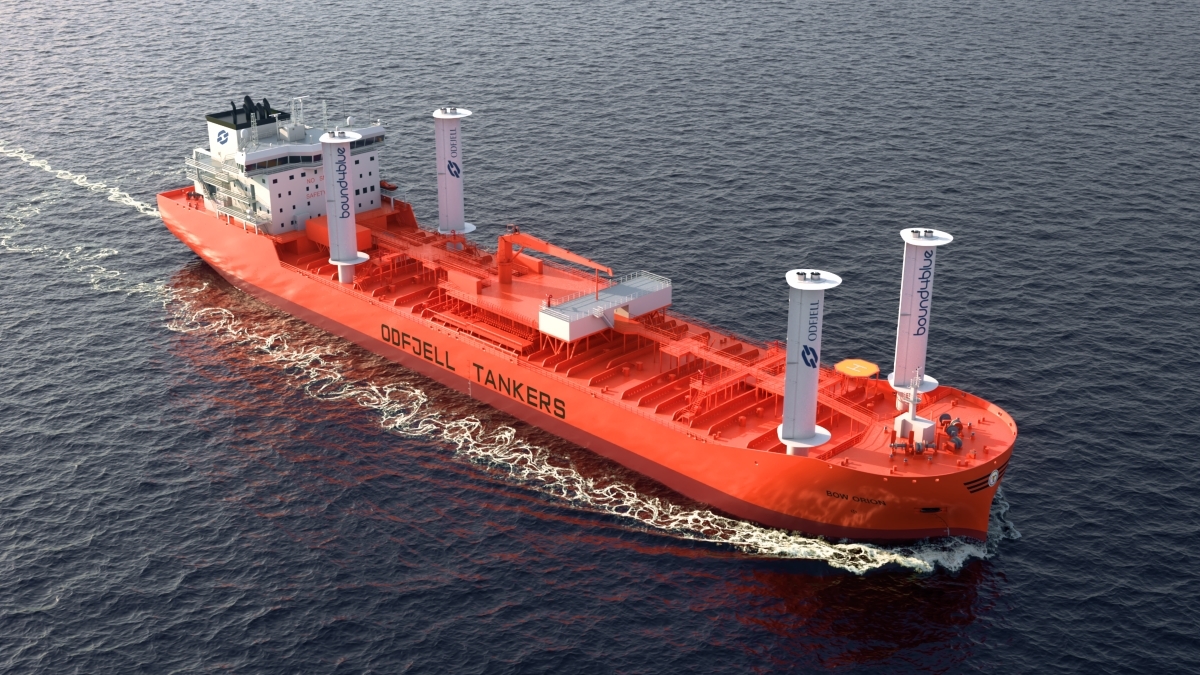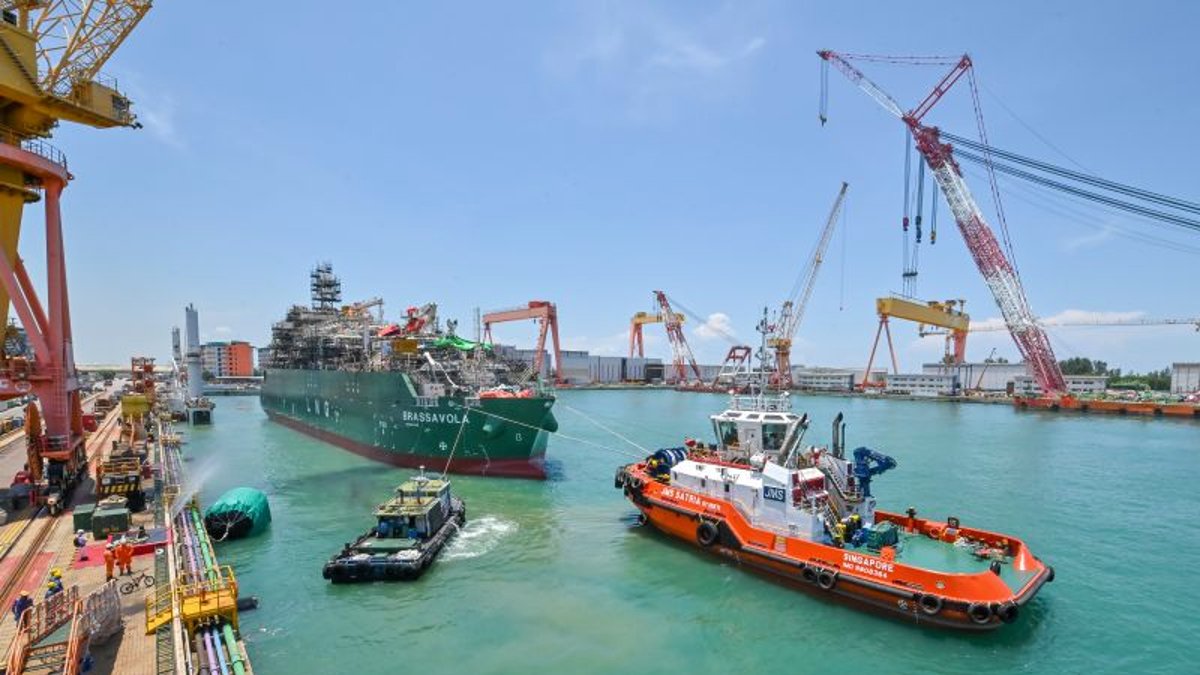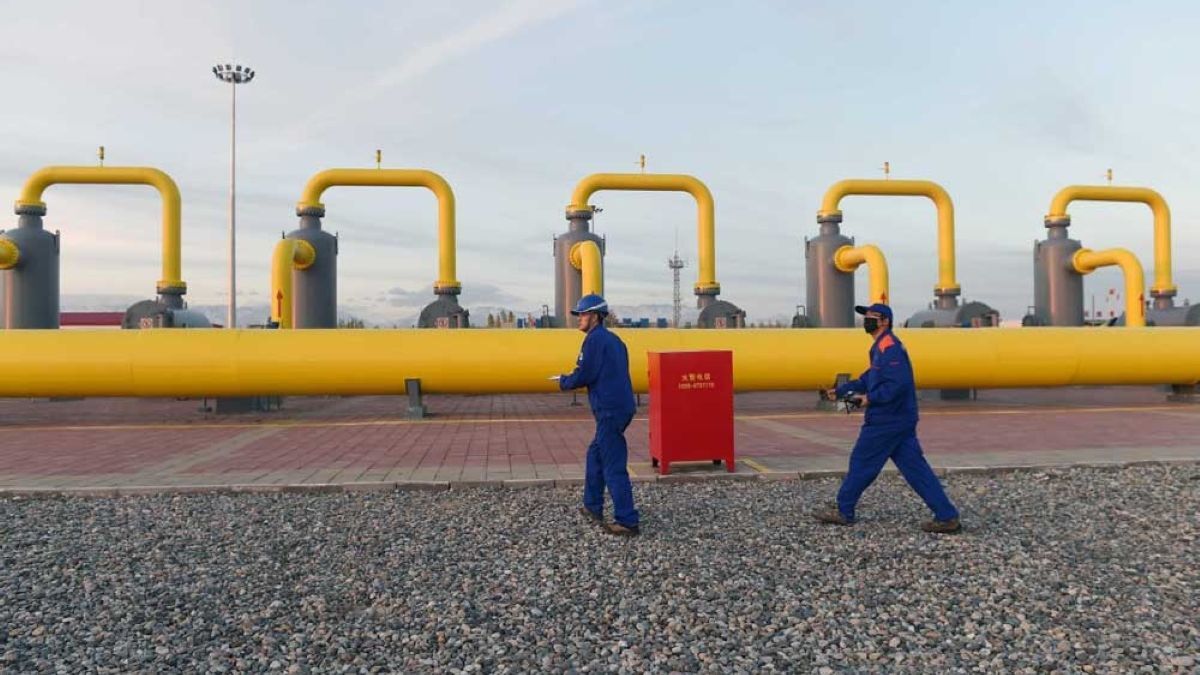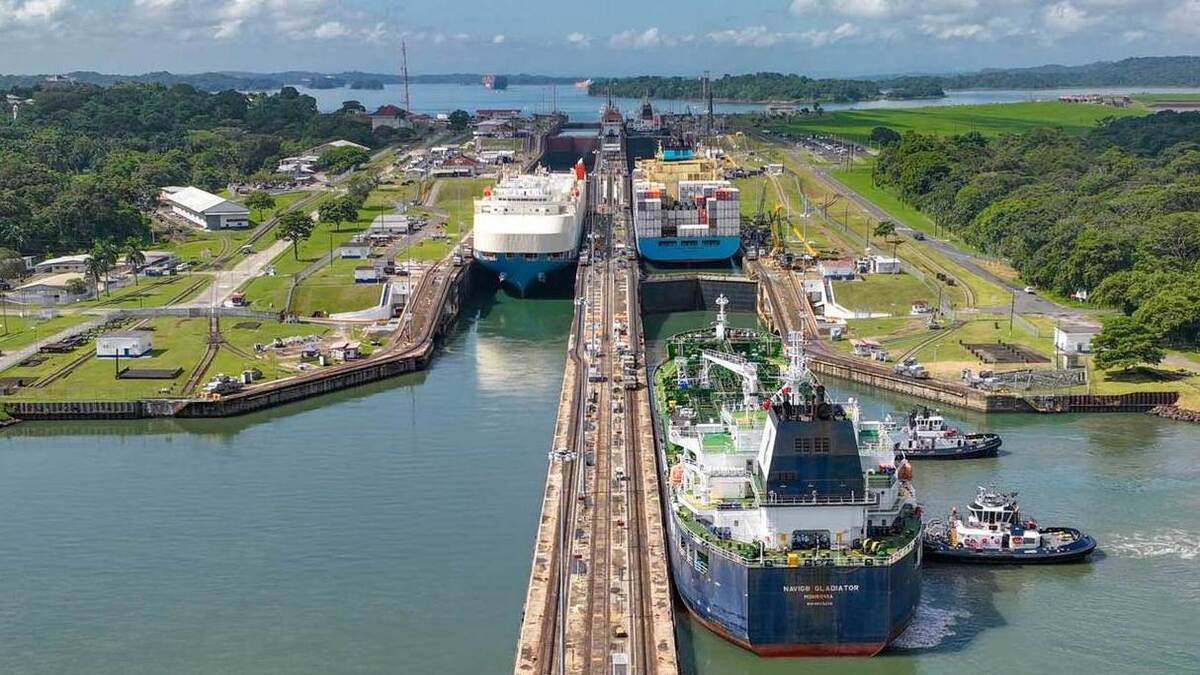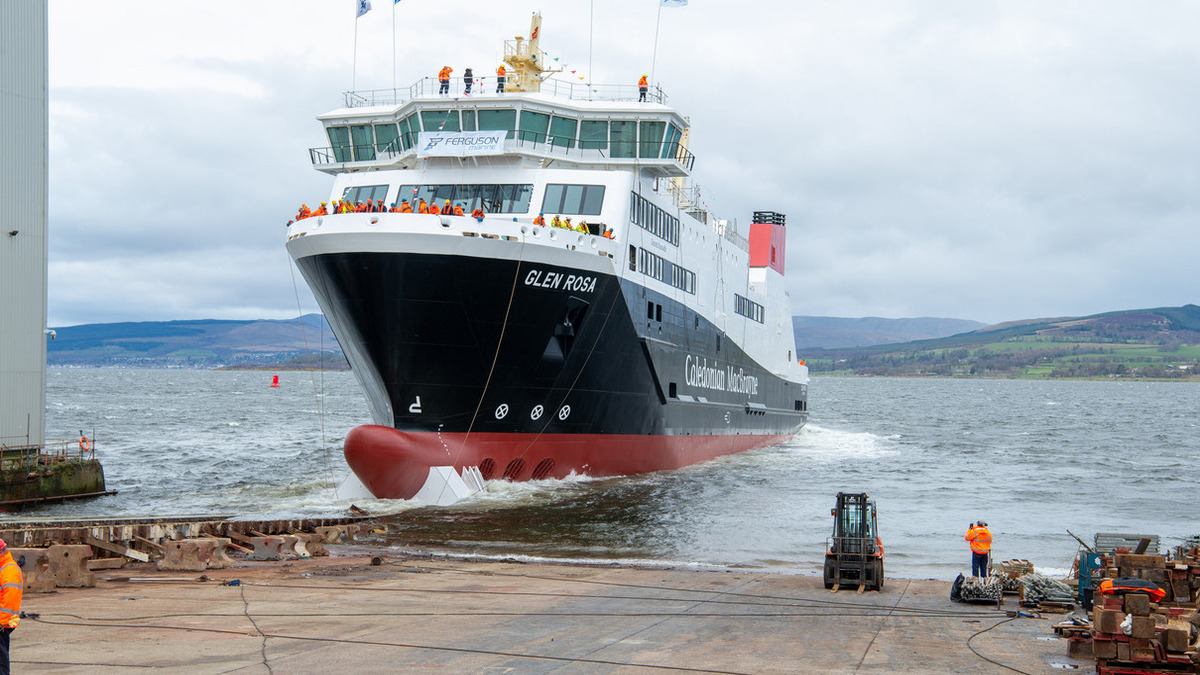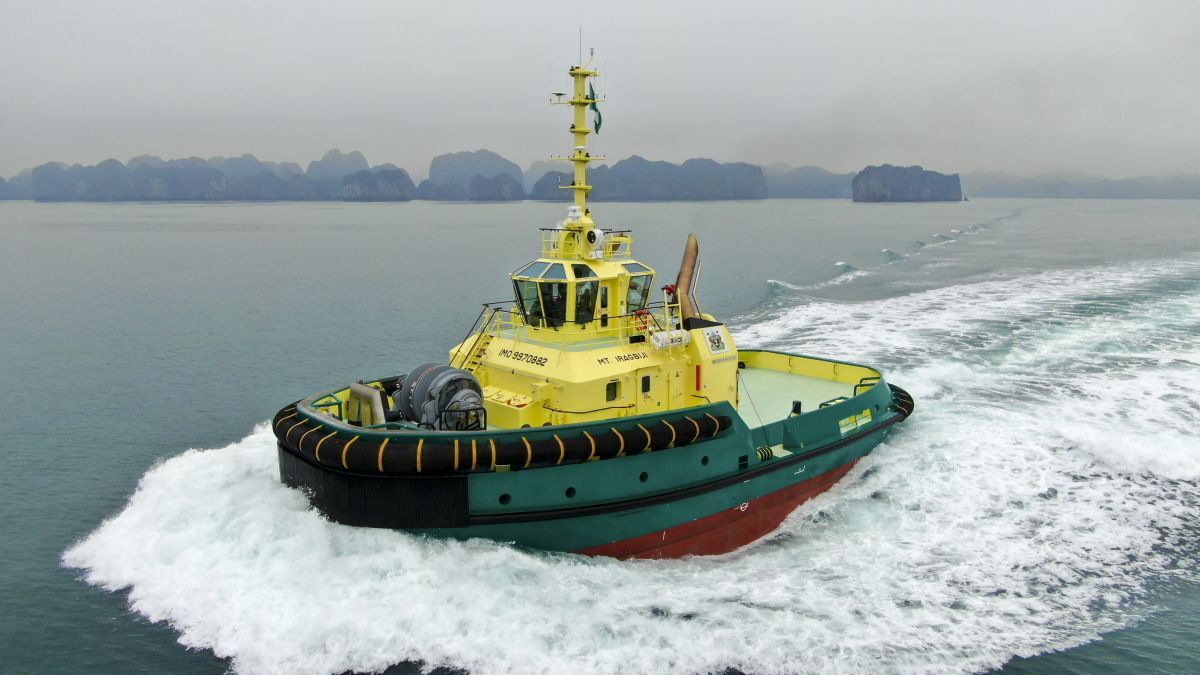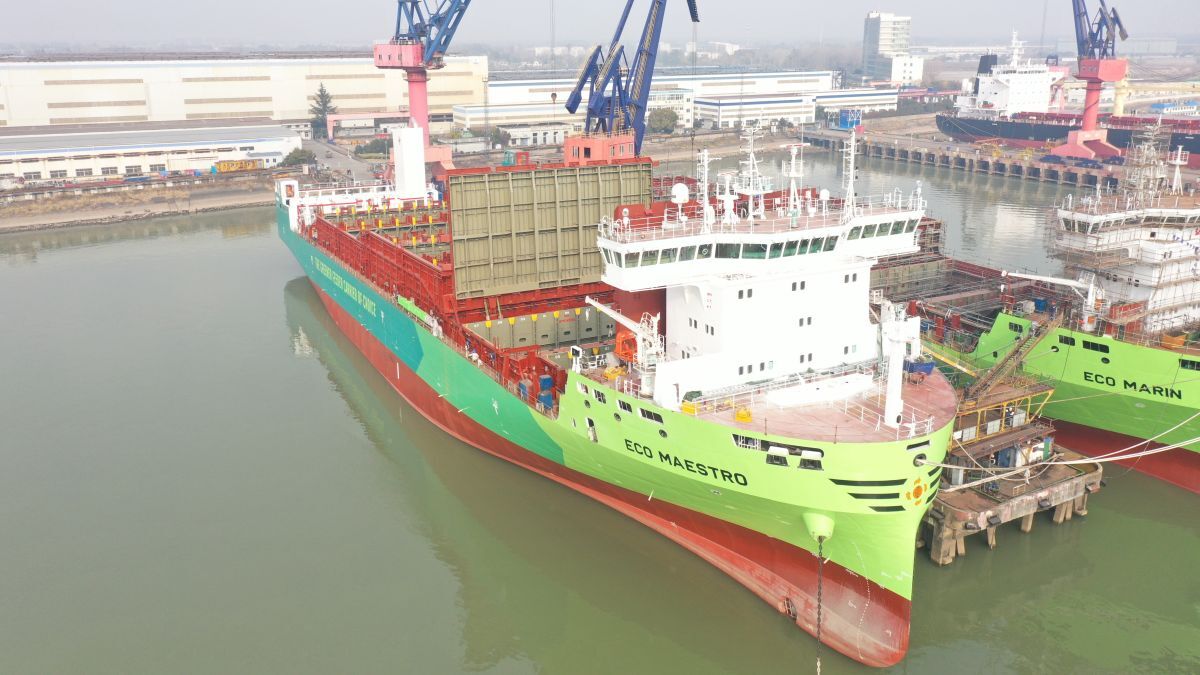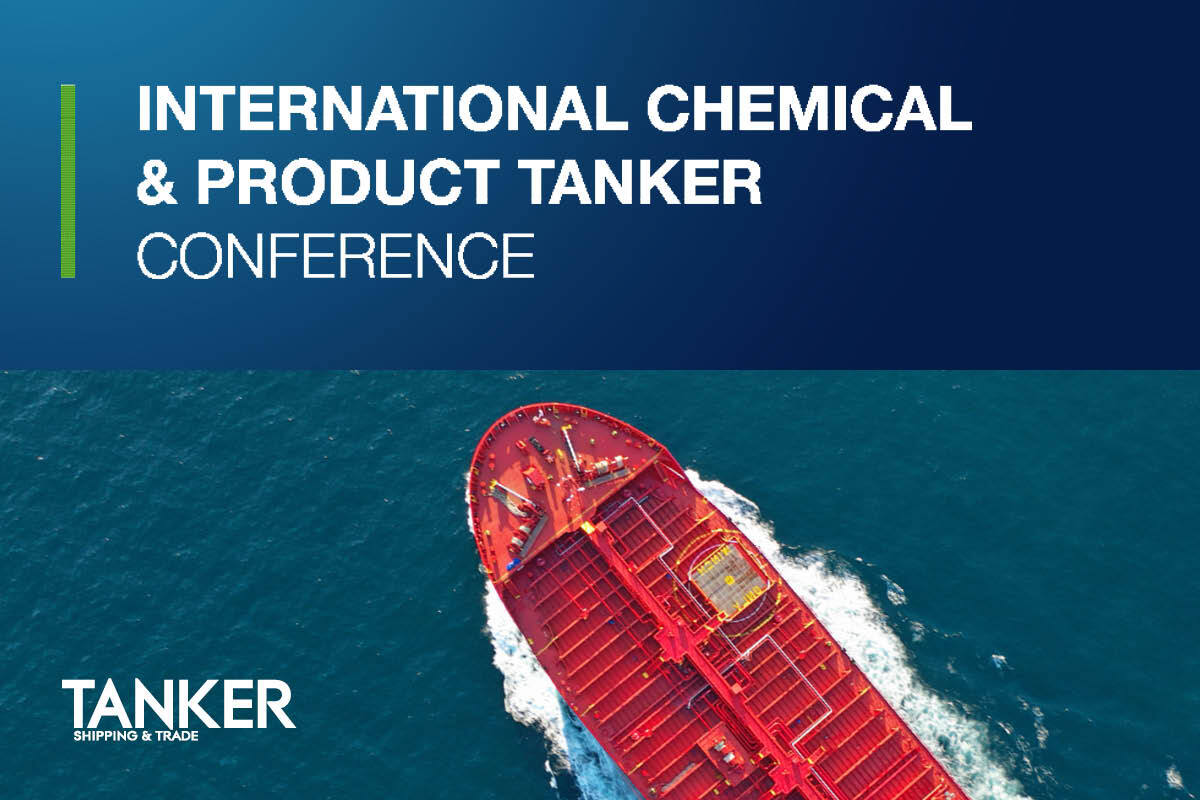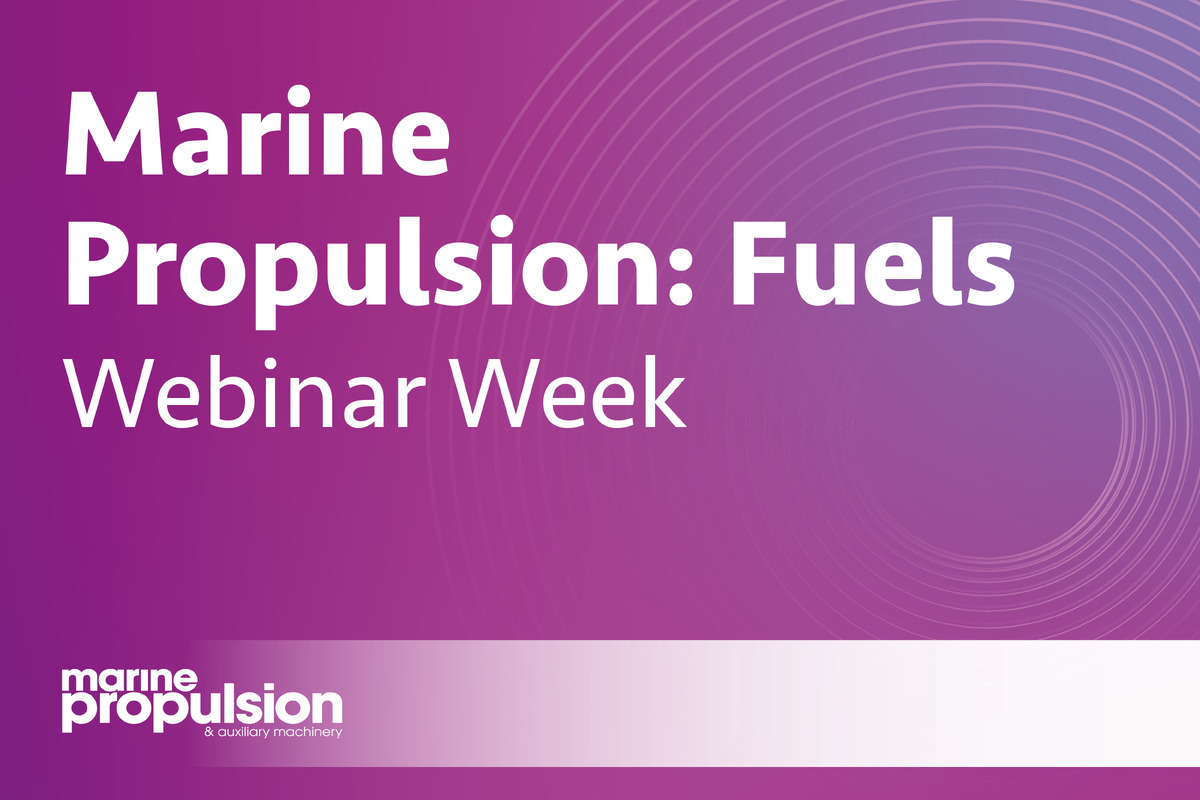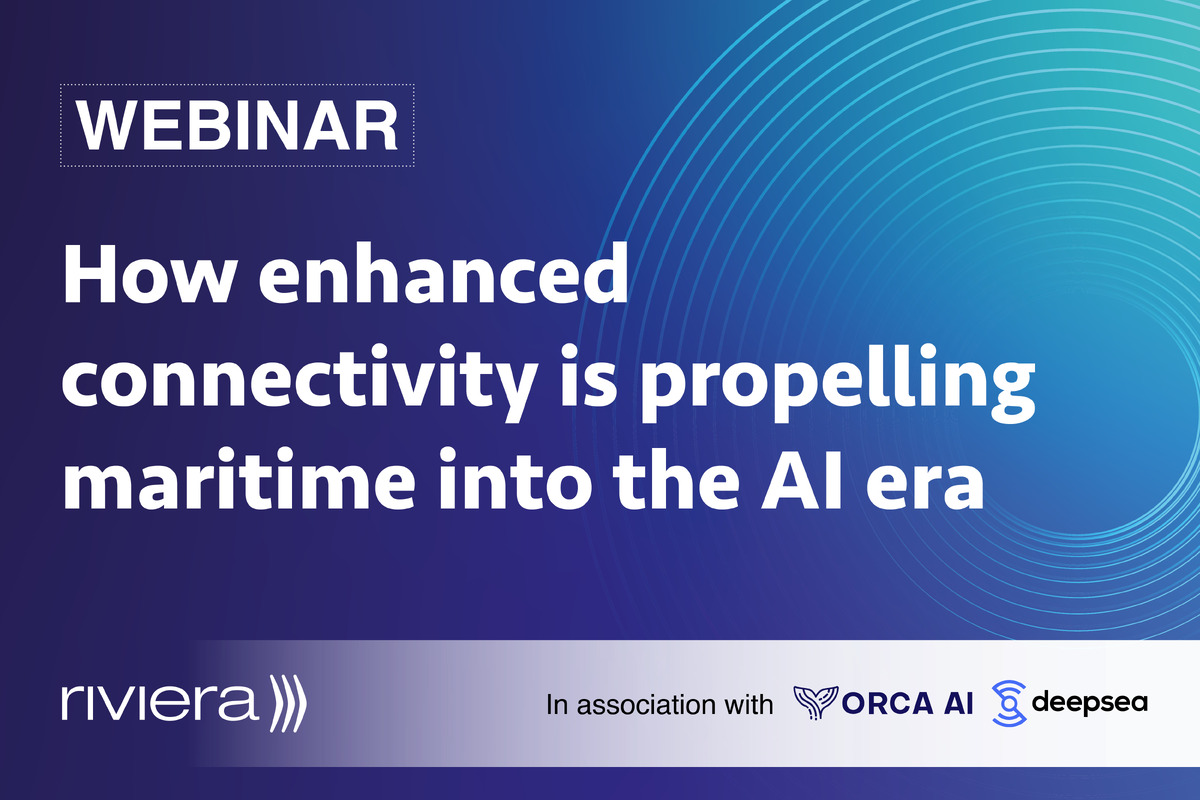Business Sectors
Events
Contents
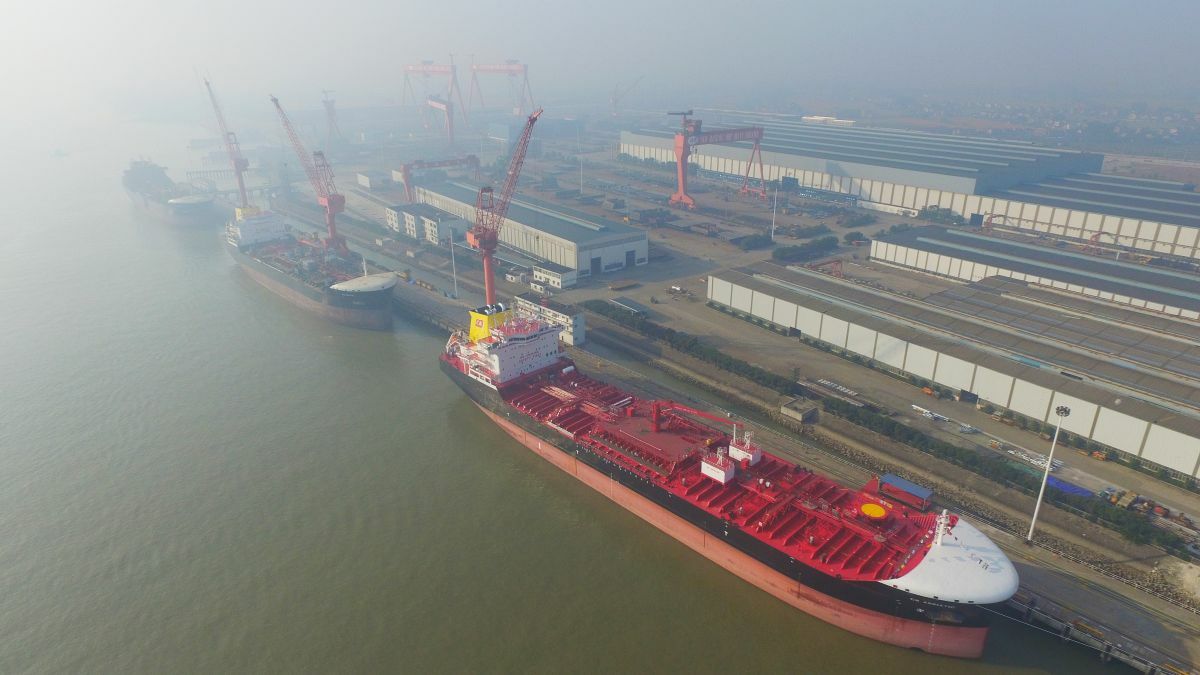
New Carl Büttner vessels benefit from fuel-saving hull design
The principle design goal for Carl Büttner’s Green Project series was to optimise fuel savings. The clever use of an asymmetrical stern and electric cargo pumps, among other features, helped achieve this aim
From day one, Carl Büttner Holding’s new 38,000 dwt IMO II product and chemical Handysize tankers have been geared to world-wide trade and optimised to operate in North European and Scandinavian winter conditions. At the design stage, it was clear that the vessels should include the latest in fuel and emission reducing equipment and hull forms. The ice-class and shallow draft design extends the geographical range of the vessel and with a special hull design, CB Adriatic, has clearly met these targets.
The 183 m-long and 32 m-wide newbuilding has 14 cargo tanks with a total capacity of 44,500 m3. The tanks are laid out in seven pairs port and starboard; each cargo tank is about 3,150 m3. The tanks are coated with PPG Phenguard 940; Carl Büttner choose this material for its excellent resistance to a wide range of organic acids, alcohols, edible oils, fats (regardless of free fatty acid content) and solvents. According to the Bremen-based shipping company, this gives the maximum cargo flexibility and low cargo absorption required to allow the loading of 96% of all easychems frequently transported, as well as oil products.
The tanks are equipped with high-quality deep-well pumps from Marflex, with loading rates of 5,000 m3/ hour and discharge rates of 3,750 m3/ hour. The electrically-driven pumps are equipped with strippers. The same pump is available as hydraulic drive, but it is generally accepted that the electrical installation is more elegant and quieter in operation. There are two common lines in the cargo system.
The ballast and engineroom pumps are provided by Taiko Holdings of Japan. These are equipped with ejectors. Taiko Holdings is the 100% shareholder of MarFlex Holding. As a result of this acquisition, Taiko Holdings has also become the 100% shareholder of Snijders, which has been a part of MarFlex Holding since 1 January 2016.
Taiko is one of the larger pump manufacturers in Japan and a well-known player in the Far East. Over the last 37 years, MarFlex has built up a worldwide brand reputation in the field of electrically driven deep-well pumps, while Snijders designs and produces automation solutions for the maritime, offshore and dredging sectors.
The cargo valves are provided by KSB and are operated by remote control. The tank cleaning equipment is from Scanjet, which also provided the P/V valves and the remote cargo level equipment. System integration is by Noris.
The ballast pumps are connected to two Alfa Laval PureBallast 3.1 ballast water treatment systems (BWTS). The provision of two BWTS ensures CB Adriatic is able to discharge at the required rate in some of Europe’s more challenging ports, while also providing redundancy.
This is important as the CB Adriatic will spend the majority of its time in trading spot between contracts of affreightment; it was designed for world-wide trade and optimised for the ECAs. The ice class and shallow draft extend its flexibility.
A small N2 generator is supplied by Oxymat with the main inert gas system supplied by Wärtsilä. The gas detection and fire-fighting equipment are provided by Consilium. On the deck, the rescue and freefall lifeboats are supplied Hatecke Germany with Viking for life rafts.
Efficiency and flexibility
Carl Büttner paid particular attention to the fuel and emissions savings that this Green Project quartet of tankers could achieve. The basic design is that of the Green Dolphin Handysize bulk carrier concept developed by the Shanghai Merchant Ship Design & Research Institute (SDARI), together with their partners. This meets the needs for fuel consumption efficiency and operational flexibility. The design was presented in 2012 and since 2015 various deliveries of newbuildings have proven that this type meets the necessary environmental requirements.
In 2016, New Hantong Shipyard and Carl Büttner approached SDARI to improve the Green Dolphin concept and use it for a Handysize 38,000 dwt chemical and oil tanker. On the basis of SDARI’s first design, a computational fluid dynamic (CFD)-based potential analysis has been conducted by class society DNV GL through its Advisory Service.
During the DNV GL consultancy process a potential for improvement was found in the flow to the propeller. In further CFD-optimisations by DNV GL an asymmetric stern was developed, promising better efficiency.
Computing power
This entire process requires enormous computing power: “We are now using highly sophisticated mathematical models on our High Performance Computing cluster, with about 7000 CPU’s in the basement of the DNV GL building, to develop several hundreds of candidates in parallel,” explains DNV GL head of department – fluid engineering Dr Karsten Hochkirch. When all computer work is done, a real-life scale model of the final design is built and taken to a traditional towing tank to verify the data. According to DNV GL’s analysis, the asymmetric stern will increase the efficiency of CB Adriatic by around 3%.
The model tests at the Hamburg Ship Model Basin (HSVA) confirmed the excellent energy efficiency of the design done by SDARI. As Dr Hochkirch says in his paper ‘Optimization of Ships with Asymmetric Aftbodies’, (Karsten Hochkirch, Bardo Krebber): “High fidelity CFD and CAD design has overcome the natural resistance of shipyards to building innovative hull designs. [There is] no longer resistance to building twisted stern in shipyards and it is possible to directly engineer optimum twisted sterns with higher fuel efficiency gains.”
The DNV GL consultancy models calm- and rough-water simulations using unsteady Reynolds-Averaged Navier-Stokes equations and the mechanical impact across the propeller and the hull.
The optimised hull design is pushed through the water by an equally optimised powertrain. The engine is a MAN Energy Solutions MAN 6S50-C9.6-HPSCR, rated at 6500 kW at 89 rpm and built under MAN licence by STX, which follows the principles of the large-bore engine series with a long stroke that reduces engine speed and allows ship designs with extreme high efficiency.
This lower optimum engine speed allows the use of a larger propeller and is more efficient in terms of engine propulsion. The 6.6-m diameter propeller turns a MAN-Kappel-CP-Propeller VBS 1450 mk 5 which was made in Denmark. The propeller diameter and propeller itself has been optimised in close co-operation between the manufacturer MAN and SDARI, DNV GL and HSVA.
The performance of the engine is closely monitored by a Noris NORIMOS 4 alarm and monitoring system. The LZYN Coriolis fuel meters from Shanghai Yinuo Instrument were chosen for their ability to precisely measure the consumption of the main engine. Combined with a torque meter on the shaft, the crew can monitor fuel consumption, the condition of the main engine and possible influences by the hull, such as marine growth.
To inhibit fouling, the hull is coated with PPG Sigma Sailadvance RX and equipped with anodes supplied by Cathelco.
Scrubber options
In keeping with the emissions reduction theme, the exhaust gas can be further cleaned by selective catalytic reduction systems (SCRs – supplied by Hitz and Yanmar) which are compliant with Tier III of Marpol Annex VI’s NOx requirements and a Saacke exhaust gas cleaning system, to comply with existing sulphur requirements. The auxiliary engines are supplied by Yanmar.
The Saacke exhaust gas cleaning system can reach the 0.1%S limit and is able to operate in closed-loop condition with zero discharge.
The large electric motors for bow thruster, cargo and ballast pumps are controlled by frequency converters. These are used to control the process and not specifically for energy saving. CB Adriatic can efficiently regulate the energy consumption for individual demands by aligning the motor speed. Kawasaki supplied the bow thruster.
Engine cooling systems are designed for tropical conditions. If used in northern regions the cooling capacity and energy consumption of the system is too high. CB Adriatic can efficiently regulate the energy consumption of the sea water cooling pumps by aligning the motor speed, according to the cooling requirements of the engine and the sea water temperatures.
The speed of the scrubber water pumps can be adopted to the required water quantity by frequency controllers.
Kockum Sonics has supplied the computerised Trim Optimisation System which is directly connected to the loading computer. This supports the officers to reach a loading condition with an ideal trim and saves up to 2% in fuel consumption.
On the bridge, Navtor’s advanced voyage planning systems and ENC solutions are used for optimal route planning. A fully integrated bridge system, comprising ECDIS, radar, AIS, depth sounder and other navigation equipment, was supplied by Furuno, which also supplied all the communication and satellite equipment.
When symmetry isn’t always best
The asymmetric stern is not a new idea, but the modern variation is attributed to Ernst Nönnecke, a trained shipbuilding engineer, sculptor and accomplished opera singer born in Hamburg in 1921, with a reputation for an intuitive, somewhat artistic approach to shipbuilding. In the late 1960s he came up with the brilliant idea of designing a ship with an asymmetric stern, to account for the different flow conditions to the right versus left side of the propeller. His concept for optimising flow and propulsion efficiency came more than a generation too early however, as the calculations were hardly possible at the time and model tests extremely tedious. Implementing the design at the yard was even more tricky – and costly.
The feature was revived in the 1960s and again in the 1980s after the oil price shocks of the 1970s. The aim was to reduce fuel consumption and increase efficiency. It seems that each generation of naval architect re-discovers the design advantages of the asymmetric stern, helped along by exponential advances in computing power. Formal parametric optimisation and CAD-based manufacturing have helped decrease the cost of designing and building the asymmetric stern. Recently, a breakthrough in the technology was made, facilitated by high-performing computers and advanced software. “What computers can do so much better than people,” explains DNV GL’s Dr Karsten Hochkirch, “is find the right balance between improved propulsion efficiency and increased resistance.” This can be accomplished only by performing complex iterative calculations for a large number of design variants – a perfect job for computers.
Related to this Story
Events
Maritime Cyber Security Webinar Week
International Chemical & Product Tanker Conference 2024
Marine Propulsion: Fuels Webinar Week
How enhanced connectivity is propelling maritime into the AI era
© 2023 Riviera Maritime Media Ltd.

